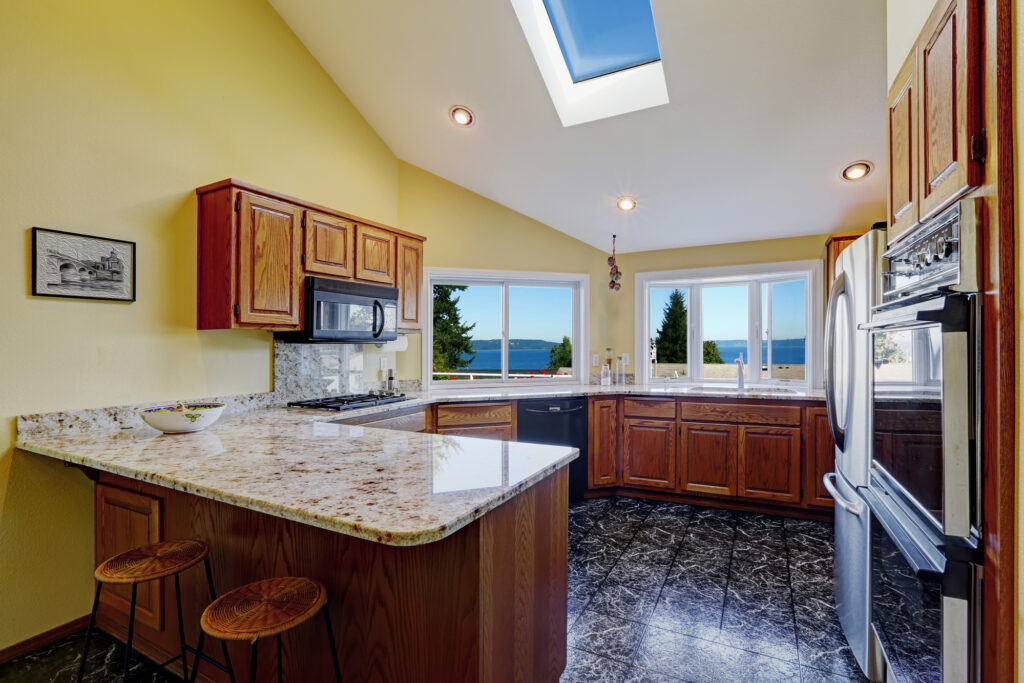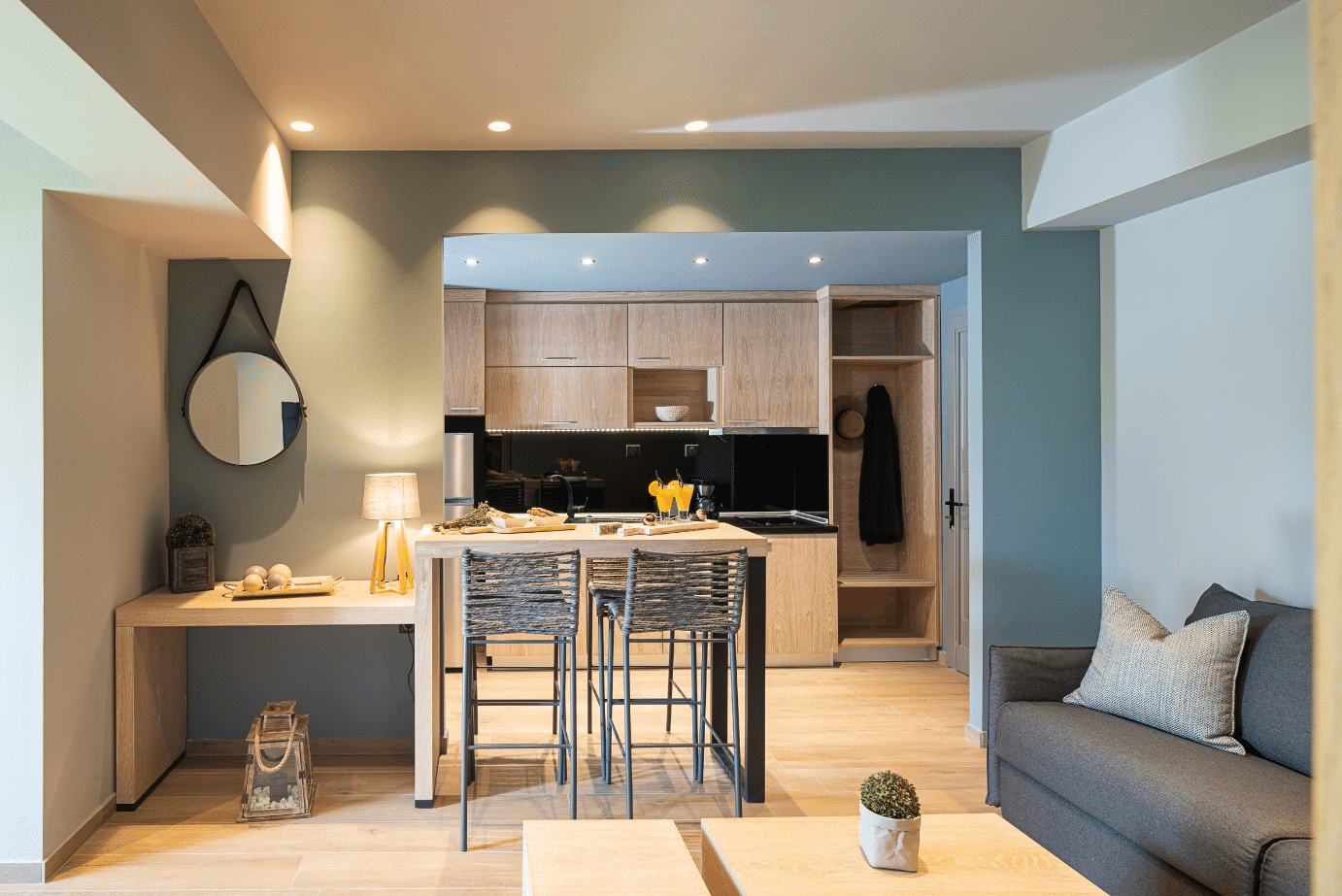
Tile floors, with their myriad of patterns, colors, and materials, offer a timeless solution to enhance your living space and stand the test of time. Whether you’re building a new home or revitalizing an old one, the right tile can transform your floors into a statement of personal style and practicality.
The Importance of Tile Flooring in Modern Homes
Tile flooring has evolved into an integral component of modern home design due to its versatility, durability, and aesthetic appeal. Unlike traditional floor coverings, it grants homeowners the flexibility to personalize and play with design parameters to suit their taste and style – a testament to its adaptability.
What truly sets tile floors apart is their durability. Tiles, especially ceramic and porcelain, are known for their resistant nature to water, stains, and wear, making them suitable for high-traffic areas in homes, such as kitchens and bathrooms. They are praised for their longevity, and with proper maintenance, they can last for decades.
Tile floors offer a nearly inexhaustible range of designs, textures, patterns, and colors that make them a delightful option for decorators and homeowners alike. They can mimic textures like wood, for example, making wood tile flooring an exciting choice for those who desire the luxuriousness of hardwood but appreciate the benefits of tile flooring.
Different Types of Tile Floors
When it comes to tile flooring, you have a plethora of options to choose from. Each type of tile brings its own unique characteristics and style to the table, making it important to understand their differences when making a decision. Whether you’re looking to simply transform your bathroom with new floors or are doing a full home remodel, there are endless options to suit your needs. Let’s delve into a few popular floor tile types.
Ceramic Tile Floors
Ceramic floor tiles, made from a mixture of clays and minerals, are a popular choice among homeowners for their versatile design and affordable price. These tiles are offered in two key categories: glazed and unglazed. A ceramic tile glazed with a protective layer makes it resistant to stains and water, allowing it to maintain its vibrant color without the risk of fading.
Porcelain Tile Floors
Porcelain tiles, while made from a similar clay mixture as ceramic tiles, are fired at a much higher temperature. This process results in porcelain’s dense, durable, and non-porous structure, making it an excellent option for wet areas such as bathrooms. The matte porcelain floor, in particular, offers a modern but timeless appeal.
Stone Tile Floors
Stone tiles can be made from various naturally occurring materials such as granite, marble, limestone, slate, or travertine. These tiles provide an organic and luxurious feel to any area, benefiting a design theme that leans toward a more natural look. It’s essential to remember that stone tiles require more maintenance than ceramic or porcelain to keep them looking their best.
Vinyl Tile Floors
Vinyl tiles offer enormous flexibility in design, ease of installation, and comfort underfoot, making them an attractive solution for many. They replicate the look of natural materials like stone or wood tile accurately, making it sometimes hard to distinguish vinyl from the real deal. Furthermore, vinyl tiles require minimal maintenance and are a budget-friendly choice.
Mosaic Tile Floors
Mosaic tiles, as the name suggests, are small tiles typically arranged in a unique or complex design to make a big impression. They come in various materials, such as glass, ceramic, and stone, with each offering a different aesthetic. Mosaic tiles are fantastic for adding personality and visual interest to an otherwise plain floor, but they do require more effort in installation and cleaning.

Factors to Consider When Choosing Tile Floors
Choosing the ideal tile for your house involves more than just sweepingly selecting the first design that catches your eye. Consider factors such as durability, budget, aesthetic appeal, and style preferences, as well as tile size and pattern.
Durability and Maintenance
One paramount factor to consider is how much traffic the area in question will be exposed to. For instance, floor tiles in the hallway or kitchen should be extremely durable to withstand heavy traffic. Porcelain tiles are typically stronger and more durable than ceramic tiles, making them a suitable choice for high-traffic areas.
Consider the maintenance requirements of each tile type. Stone tiles, while inherently hardwearing, might require periodic sealing to keep them resistant to spills and stains. Vinyl tile flooring, although not as resilient, can be a great choice for areas that require easy cleanup, such as children’s rooms or pet zones.
Budget Considerations
The budget is undoubtedly among the top factors in selecting floor tiles. Not surprisingly, the price per square foot for tile can vary widely based on material, design, and quality. For instance, ceramic tiles tend to be more affordable than porcelain or stone tiles. Keep these points in mind, too:
- Be mindful of the additional costs, including the grout, sealant, and labor costs, which might inflate the overall budget.
- Consider the long-term perspective, such as lifetime value. Higher quality tiles such as stone or porcelain may incur a bigger upfront cost, but in the long run, their durability might result in fewer replacement costs.
Aesthetic Appeal and Style Preferences
From subway tile to hexagon matte porcelain floor tiles, it is essential to choose a design that complements your home’s aesthetic. Do you prefer a glossy porcelain floor or a matte finish? Does a classic white ceramic floor appeal to you, or would you rather have wood tile flooring to give your space a rustic, warm ambiance? Remember, your floor is an integral part of your interior design. Consider the following:
- Consider the color. Lighter shades make smaller rooms appear spacious, while darker tones offer sophistication and substance.
- Beyond color, texture, and pattern make a significant difference. From matte porcelain tile to glossy, smooth, or decaled, your tile choice should reinforce your overall design theme.
Tile Size and Pattern
Tile size can dramatically influence the perception of space in a room. Bigger tiles can make a room seem larger and more open, while smaller tiles add interest and texture but can make a room feel more compact. Patterns also have an impact. For instance, laying rectangular tiles in a herringbone pattern can make a space seem wider.
Expert Insights at High Performance Home
For in-depth insights into the dynamic home industry and its innovations, turn to High Performance Home. Explore our website to discover the latest trends in plush carpeting choices for any room, enhancing kitchens with quality floors, everything about the world of flooring, and get to know our vinyl flooring range. Or gather round with our floor designs for the latest in gathering room trends. You can also peruse our blogs and delve into our mission to unite stakeholders in the home industry for enhanced performance and development.
Frequently Asked Questions
What type of floor tile is best?
The best type of floor tile largely depends on the room’s function and your personal preferences, with porcelain and ceramic tiles being popular for their balance of durability, cost, and ease of maintenance, while natural stone tiles are prized for their unique beauty and resilience.
Is it expensive to tile floors?
Tiling floors can be a financial investment, with costs varying widely based on the material, complexity of installation, and the price of labor, making some tiling options expensive yet potentially adding significant value to your home.
Is tile floor better than laminate?
While tile floors are generally more durable and have a longer lifespan than laminate, especially in areas prone to moisture, laminate flooring can be more cost-effective and easier to install, making the choice between the two a matter of budget, desired aesthetic and functionality.
